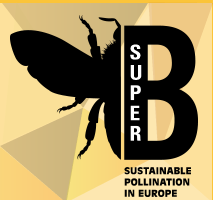Deadline STSM's: 31 July 2017!
Short-term scientific missions (STSM's) are exchange visits between researchers involved in a COST Action, allowing scientists to visit an institution or laboratory in another COST country. They are aimed at fostering collaboration, sharing new techniques and infrastructure that may not be available in other participants' institutions or laboratories. STSM are intended especially for young researchers.
Note: Every STSM has to take place between 15 August 2017 and end before 20 March 2018.
Special addition to the call
Because this is the last possibility for STSM's in this COST Action, we also want to advertise STSM's that would really help contribute to the goals of the different working groups (see end of this call). If you're interested in the advertised STSM's, please contact the person listed with it.
What you need to do to reply to this call?
Please encourage young researchers to use this opportunity and let them fill in this document online and submit it before the 31 of July. To do so you need to create an e-cost profile if you don't have one already. You can register on the same page. Our action number is FA1307. Besides filling in this document online, please send the following documents to both the STSM coordinator prof. Ahmet Murat Aytekin (aytekinahmetmurat@gmail.com)
· a copy of the COST form you submitted online
· a motivational letter (max 400 words)
· CV
· List of publications
· Detailed work plan for your STSM
· Supporting letters from your supervisor at home and the host supervisor on your STSM location
After 31 of July, the STSM coordinator and the core group will evaluate all those who applied. As soon as all applications have been reviewed we will let you know who will receive an STSM grant.
The rules
Please read the rules conncected to an STSM grant as written down in the COST Vademecum carefully, starting on page 30. You can read there what you can and cannot receive reimbursement for.
An important point: Every grantee must submit a report of the STSM to the coordinator of the STSM (cc to the chair) within 30 days after the end date of the STSM. Failure to submit the report will result in cancellation of the grant!
The report should contain:
- Short (half page) summary of the report
- Purpose of the STSM;
- Description of the work carried out during the STSM;
- Description of the main results obtained in light of the objectives of the SUPER-B action;
- Future collaboration with the host institution (if applicable);
- Foreseen publications/articles resulting from the STSM (if applicable);
- Confirmation by the host institution of the successful execution of the STSM.
The length of the report should not exceed 5 pages. The summary of the report will be posted on the SUPER-B web page once the report is approved by the coordinator of the STSM and SUPER-B chair. If you have any questions, please do not hesitate to ask!
WG 1&2 Crop and region specific pollinator management recommendations. Management recommendations for functional groups of different crops and/or different regions would be developed based on Kleijn (2015). Delivery of crop pollination services is an insufficient argument for wild pollinator conservation and Garibaldi (2015). Trait matching of flower visitors and crops predicts fruit set better than trait diversity. The output would be a publication. The STSM candidate would visit Mike Garratt (Reading Uni ). This would complement earlier work in WG2 to progress tasks "Assess variability of main pollinators across different crops and regions" and "Compile information on pollinator management practices".
WG 4 To determine whether managed and wild bee populations respond differentially to drivers of decline. The STSM would dive into the overlap of Epilobee, COLOSS data and red lists. People involved: Peter Neumann: Spatial and temporal patterns to honey bee decline in Europe, Stuart Roberts: The European red list of bees: gathering the data, Denis Michez: Spatial and temporal patterns to wild bee decline in Europe.
WG 4 To explore new mechanisms for detecting stress in wild and honey bees
This STSM would consist of a literature review of genetic markers to a variety of stressors. A mechanistic understanding of interactions among stressors with Orlando Yañez.



